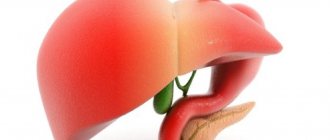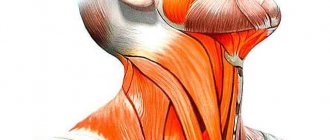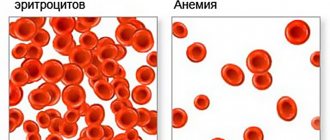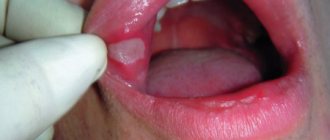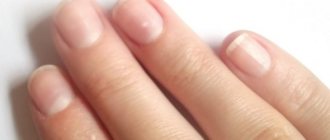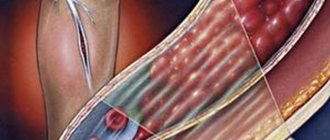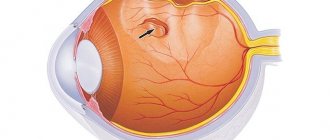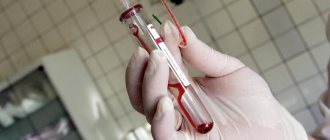General information
Urolithiasis (other names: nephrolithiasis , kidney stones , urolithiasis ) is a disease during which stones form in a person’s kidneys or other organs of the urinary system. Symptoms of urolithiasis can first appear in a person at almost any age. As diagnostics indicate, the disease can develop in both newborns and the elderly. But depending on the age of the sick person, the type of stone differs. Thus, in older patients, uric acid stones . At the same time, protein stones are found much less frequently in patients who require treatment for urolithiasis. Most often, with urolithiasis, stones with a mixed composition are formed. The size of the stones may vary. So, if we are talking about stones up to 3 mm in diameter, then it is not stones that are determined, but sand in the kidneys. Sometimes large stones can reach up to 15 cm. There are also descriptions of cases where stones weighed more than 1 kg.
Treatment
Treatment of urolithiasis in women depends on the stage of the pathology. The doctor can offer both conservative and surgical treatment strategies. The conservative technique involves taking special medications.
The drugs are selected depending on the composition of the detected stones:
- diuretics in combination with anti-inflammatory and bisphosphonates. Such drugs are recommended if the stones are of a phosphate nature. With such a course of the disease, herbal treatment helps to achieve excellent results;
- citrate suppositories and vitamin complexes are prescribed for the treatment of urolithiasis, in which stones are of an oxalate nature;
- drugs that inhibit the formation of urea are recommended when stones of urate etiology are detected.
In order to relieve the pain that often accompanies KSD, patients are recommended to take analgesics and medications that relieve spasms of smooth muscles. If an infection is associated with urolithiasis, a course of antibiotics may be required.
If the stones are large and completely block the ureters, surgery may be required.
If the disease is severely advanced or the patient has been treated incorrectly for a long time, the surgeon may remove part of the kidney.
The most gentle methods of surgical treatment of urolithiasis are endoscopy and laparoscopy.
In this case, the stones are removed through a small puncture made in the patient's abdominal wall. If surgery is impossible for one reason or another, the stones are crushed using ultrasound.
In order for conservative treatment to be effective and to avoid surgical intervention, it is important to carefully follow the recommendations of your doctor and drink as much water as possible while taking medications. It is important to drink water, not tea and other drinks.
Causes of urolithiasis
Before prescribing therapy for a disease or practicing treatment with folk remedies, if possible, one should determine the probable causes due to which a person has signs of urolithiasis. The main reason for the appearance of kidney stones is serious disturbances in the metabolic process, in particular changes in the chemical and water-salt balance of the blood. But at the same time, the presence of certain factors predisposing to the formation of stones plays an important role in the development of the disease. First of all, this is the development of gastrointestinal diseases in humans, as well as ailments of the genitourinary system, bone diseases, and dysfunction of the parathyroid glands. Vitamin deficiency can also provoke the appearance of stones. It is especially important to compensate for the lack of vitamins D , so even disease prevention involves taking them.
Nutrition is an equally important factor. Stones appear more often in those people who consume foods that can significantly increase the acidity of urine. That is why the diet for urolithiasis excludes salty, sour and too spicy foods. Another important point is the water that a person regularly consumes. If it is too hard and contains more salts, then the likelihood of stones increasing. More often, stones are found in people who constantly live in very hot climates. But lack of exposure to ultraviolet rays can provoke urolithiasis. During the diagnostic process, the doctor not only prescribes the necessary research methods, but also finds out what exactly could have triggered the onset of the disease. Both drug and alternative treatment should be carried out taking into account these reasons.
Causes
Doctors assure that urolithiasis develops only under the influence of beneficial factors; without prerequisites, the likelihood of developing this disease will be minimal.
Numerous clinical studies confirm that the main causes of urolithiasis are:
- improper metabolism;
- diseases of the kidneys and urinary system;
- pathological processes in bone tissue;
- insufficient water intake and dehydration;
- problems with the gastrointestinal tract (chronic diseases);
- acute vitamin deficiency;
- unhealthy diet (abuse of fatty, fried, fast food and soda);
- drinking contaminated tap water.
Metabolic disorders almost always lead to excessive accumulation of insoluble salts, which serve as the basis for the formation of phosphates and urates.
At the initial stage, the disease will practically not make itself felt, the painful sensations will intensify only as the tumors grow
Symptoms
In most cases, kidney stones manifest themselves with signs that a person cannot help but notice. But sometimes the disease is hidden, and kidney stones can only be detected by chance, when other diseases are diagnosed and treated.
The main symptoms of urolithiasis are the manifestation of pain in the lumbar region. A person may experience pain on one side or both. The pain is dull but exhausting; it intensifies with physical activity or when the patient tries to change body position. If a kidney stone ends up in the ureter, the pain becomes more intense and affects the lower abdomen, groin, and genitals. Sometimes it hits my leg. A very severe painful attack often ends with the passage of stones in the urine.
Patients with urolithiasis periodically suffer from renal colic . This is a condition in which incredibly severe pain develops in the lower back area. Colic can even last for several days, while the pain subsides a little, then returns again with renewed vigor. The attack stops when the stone changes position or goes into the bladder.
If you have kidney stones, a person may feel pain when urinating, and may also urinate too frequently. In this case, it can be assumed that there are stones in the ureter or bladder. During urination, the urine stream is sometimes interrupted, and the patient does not feel the bladder completely empty. Doctors define this symptom as “stuffing” syndrome. If a person changes his body position, urination continues.
After a painful attack or physical exertion, blood may be found in the patient’s urine. Also, urolithiasis is characterized by cloudy urine and periodically occurring high blood pressure. If pyelonephritis is added to the disease, the patient’s body temperature can increase to 38-40 degrees.
Sometimes stones or sand in the kidneys are present in a person throughout his life, and no symptoms appear. Consequently, the patient may not even know about his illness. In general, the symptoms directly depend on the size and type of stone the patient has, where exactly the stone is located, and what problems are observed in the functioning of the genitourinary system. Treatment of sand in the kidneys and stones in the genitourinary system is also carried out taking into account these factors.
Thus, the main objective symptom of urolithiasis is kidney stones. Symptoms of kidney stones are, first of all, cloudiness of the urine, the presence of sediment in it, a change in character (dark and thick urine appears at the beginning of the urination process).
Additional research can determine which stones have formed in a person’s kidneys. They may have different composition. There are phosphate, calcium and oxalate kidney stones. But still, diagnostics indicate that most often stones of a mixed type are formed in the kidneys of patients.
Removing kidney stones is the main point of treatment. But initially the doctor must determine all the features of the disease and only then decide what to do. It is important to consider that at the very beginning of the disease, stones may not manifest themselves at all. In this case we are talking about the so-called stone-bearing. But even in this case, it is important to identify the disease and determine how to remove the stones, since at any time they can provoke renal colic . The reasons that influence the manifestation of symptoms are varied: severe stress, a disrupted diet, and intense physical activity. By the way, in most cases, renal colic is caused by small stones. But the presence of large stones in the kidneys, the photo of which is especially impressive, is no less dangerous, since this is a direct path to the development of renal failure and death of the kidney. Therefore, an extremely important point is to conduct a high-quality diagnosis with all the studies, from where the doctor can learn about the characteristics of the disease, and subsequent treatment. Prevention of the disease in those who are prone to stone formation also deserves special attention.
Clinical picture
As with most other diseases, at the initial stage the symptoms of urolithiasis will be mild or completely absent. Signs will begin to appear as the disease progresses, and the patient may complain of the following disorders:
- Constant aching pain in the kidney area, which will intensify significantly during physical activity. Painful sensations can also be localized in the lateral abdominal cavity.
- Unreasonable surges in blood pressure.
- Increase in body temperature in the late afternoon. As the pathology develops, the value can reach 38-39 degrees.
- Frequent false urge to urinate. The process of emptying the bladder will be accompanied by painful sensations.
- Renal colic.
- The appearance of blood clots in urine.
In some patients, urolithiasis provokes stool disturbances and flatulence, and the patient may also complain of constant nausea.
It is important to remember that if the patient has not been diagnosed, it is not recommended to take painkillers before the ambulance arrives, as they can reduce symptoms, as a result of which the doctor will not be able to make a correct diagnosis.
Stages of flow
If you start urolithiasis, it will begin to progress and lead to the occurrence of concomitant pathologies. To prevent this, it is necessary to deal with the removal of stones at the initial stage, when the stones can be broken with the help of medications.
It is important to remember that the treatment method is selected depending on the stage of the disease:
- Stage I. The diameter of the stones will vary from 2 to 4 mm. At this stage, the patient can be cured without surgery.
- Stage II . If you do not take the necessary medications, the stones will begin to become overgrown with tissue. At stage II, the size of the stones reaches 10 mm.
- Stage III . The diameter of the neoplasm exceeds 10 mm. To get rid of the pathology, surgical intervention is required.
Diagnostics
There are a number of diagnostic methods with the help of which diseases of the urinary system are detected by specialists in the early stages. But the awareness of patients is also important here. Every person, when the first symptoms of pathologies of the genitourinary system appear, should consult a doctor, since he himself will not be able to understand whether he has stones in his kidneys, ureter or bladder.
After interviewing the patient, the urologist prescribes the necessary examination. First of all, a laboratory urine test is performed to determine the presence of microbial infection, the presence of blood in the urine , and also to learn about the nature of salt impurities. Using a general blood test, inflammatory processes are detected. In addition, a biochemical blood test . One of the most important tests for suspected kidney stones is a kidney ultrasound. However, in some cases, ultrasound still does not make it possible to determine the presence of stones in the ureter, since they may be located deep behind the peritoneum.
In order to detect stones, the patient is often prescribed excretory urography. To do this, a contrast agent is injected into a vein, after which X-rays are taken. Studying a general image of the urinary system allows the doctor to identify exactly where the stones are located and find out what their shape and size are. But at the same time, the specialist takes into account that some stones are capable of transmitting X-rays. As a result, they are not visible in the photographs.
Another research method is radioisotope nephroscintigraphy . The procedure begins with the injection of a special radiopharmaceutical into a vein. It accumulates in the kidneys and is then excreted through them. At this time, the kidneys are scanned, which makes it possible to determine whether their functions are impaired. The study is informative for a specialist.
Urolithiasis during pregnancy
During pregnancy, urolithiasis is diagnosed much less frequently than in women who are not pregnant. If the disease proceeds without significant complications, then this does not affect the course of pregnancy and the health of the baby. Otherwise, a miscarriage is possible.
As a rule, this disease is not regarded as a contraindication to conceiving and bearing a child. Hospitalization of a pregnant woman is carried out only in the following cases:
- symptom of renal colic;
- development of infection against the background of urolithiasis;
- gestosis;
- pyelonephritis.
As for the clinical picture, during pregnancy it becomes more pronounced:
- renal colic;
- cystitis;
- unstable body temperature, high blood pressure;
- frequent urge to urinate;
- presence of blood in the urine.
It is noteworthy that during pregnancy, urolithiasis may not be as painful as in women who are not pregnant.
In 80% of cases of urolithiasis in pregnant women, pyelonephritis develops against the background of this disease. This pathological process can manifest itself both in the first and second trimester. In this case, hospitalization is simply necessary.
As for treatment, during pregnancy the emphasis is on a diet rich in minerals, with plenty of purified water. The use of medications is kept to a minimum. Proper nutrition is also very important, with all the necessary vitamins for mother and child. Treatment of urolithiasis during pregnancy should be strictly under medical supervision.
Prevention
As a measure to prevent urolithiasis, it is necessary to balance your diet to make it as healthy as possible. You should drink at least two liters of fluid per day and under no circumstances allow the lumbar area to become hypothermic. It is also worth taking care to get rid of excess weight . If a person feels that discomfort or pain has appeared in the lumbar region, then a visit to the urologist should not be delayed under any circumstances.
Diet
In addition to taking medications, a patient with urolithiasis should adhere to a proper diet. The diet excludes or minimizes the consumption of the following foods:
- foods rich in oxalic acid;
- spicy, sour, too salty;
- coffee, chocolate;
- meat and dishes made from them (including broths);
- foods rich in vitamin C.
Instead, the patient’s diet should include the following foods:
- potato;
- cereals;
- dairy products;
- coarse cereals;
- fruits.
Particular attention is paid to drinking. The daily water consumption rate should be at least 1.5 liters. As for mineral water, it should be without gas. It is advisable that the type of water (composition, amount of consumption) be prescribed by a doctor.
Instead of water, you can use herbal teas. But this should also be done as prescribed by a doctor.
Diet, nutrition for urolithiasis of the kidneys
Diet for urolithiasis
- Efficacy: therapeutic effect after 2 weeks
- Timing: constantly
- Cost of products: 1300-1400 rubles. in Week
For patients diagnosed with urolithiasis, it is very important to constantly adhere to a special diet. The patient’s diet is developed depending on the composition of the stones and what reasons provoked the development of urolithiasis. Nutrition is organized so that the diet contains a minimum of foods that contribute to the formation and growth of stones.
If a person is diagnosed with phosphate urolithiasis , then an alkaline urine reaction is noted. Therefore, it needs to be acidified. Such patients are not recommended to eat a lot of vegetables and fruits, and dairy products should not be included in the diet. Recommended meat, fish, vegetable oil, flour. You need to drink a little less than when oxalate and urate stones are detected.
If carbonate stones , then it is important for the patient to limit the consumption of foods that are rich in calcium. The acidity of urine is increased by eating fish, meat, eggs, butter, and flour.
If you have urate stones, you should eat as little food as possible that causes the formation of uric acid. These are kidneys, liver, meat broths. Fish, meat, and vegetable fats are also limited. Such patients need to drink fresh lemon juice, but grapefruit juice is not recommended.
If oxalate stones , you need to remove from your diet those foods that contain oxalic acid and calcium. These are sorrel, potatoes, spinach, oranges, dairy products.
There are also a number of general recommendations for patients with urolithiasis. Every day you need to drink at least two liters of liquid, and in the hot season you need to drink so much liquid so that you never feel thirsty . Taking infusions and decoctions of diuretic herbs has a positive effect on the body. It is important to limit sour, spicy, salty foods and avoid overeating. You should not drink alcoholic beverages. Doctors also recommend that patients with stones lead an active life, but avoid heavy exercise. You should not allow yourself to be under extreme stress or overcool.
If renal colic begins suddenly in a person, then a warm bath or a heating pad, which should be applied to the lumbar region, can relieve the pain.
Treatment with folk remedies
- Air . 20 g of calamus rhizomes per 100 ml of 40% alcohol are infused for 2 weeks, strained, squeezed, filtered, stored in a cool, dark place in a dark bottle. Take 15-30 drops 2-3 times a day before meals.
- Watermelon (rinds) . Cut the watermelon rinds into small pieces, dry in the shade or oven, chop, add water (1:1), boil over low heat for 30 minutes, cool, strain. Drink 1-2 glasses 3-5 times a day before meals.
- Watermelon . Bulgarian folk healers also advise eating up to 2.5 kg of watermelon daily.
- Banks . To remove the stone, you can use cups that are placed on the patient below the place where pain is felt. Sometimes, to lower a stone, it is enough to do physical exercises or ride a horse. It is also good to use watering with chamomile, marshmallow, and sweet clover.
- Cowberry . Pour 2 tablespoons of lingonberries into 200 ml of boiling water, leave in a boiling water bath for 30 minutes, cool, strain. Drink 1/2-1/3 glass 2-3 times a day. Store in the refrigerator for no more than a day.
- Grapes (juice) . Grape juice acts like alkaline water and is recommended for removing uric acid from the body and dissolving bladder stones. In addition, long-term treatment with grape juice regulates blood pressure.
- Bird's knotweed . Pour 1-2 tablespoons of knotweed herb into 200 ml of boiling water and leave in a boiling bath for 15 minutes. Cool, strain, squeeze out the remainder, bring the volume to the original volume by adding boiled water. Drink 1/2-1/3 glass 2-3 times a day before meals. Store in the refrigerator for no more than 2 days.
- Larkspur field . 20-30 g of larkspur grass, pour 1 liter of boiling water, leave for 1-2 hours, strain and drink 1/4-1/2 cup 3 times a day before meals; the infusion dissolves stones and sand in the bladder well.
- Figs . It is recommended to eat figs. Acts as a diuretic.
- Potato . Wash the potato tubers and cut off a thin layer of skin. Take 2 handfuls of peelings and cook until they are soft. Drain the broth and drink 2-3 times a day before meals, 1/2 cup.
- Stinging nettle . Brew 20 g of leaves or roots of stinging nettle with 1 cup of boiling water, leave for 30 minutes, strain. Drink 1 tablespoon 3 times a day before meals.
- Corn (columns) . Pour 200 ml of boiling water over a teaspoon of crushed corn columns with stigmas and steam for 2 hours. Drink 1/2 glass 3 times a day before meals for 6 months.
- Lemon (juice), vegetable juices. To dissolve kidney stones, drink the juice of 1 lemon with 1/2 cup of hot water several times a day. At the same time, drink 1/2 cup of a mixture of carrot, beet, and cucumber juices 3-4 times a day for several days or weeks (depending on the size of the stones) until the sand and stones in the kidneys and bladder disappear.
- Small-leaved linden (color) . Pour 2 tablespoons of small-leaved linden flowers into 400 ml of hot boiled water, boil for 10 minutes. Drink 1-2 glasses at night for pain in the urethra, sand in the urine.
- Onion . Chop the onion, fill 1/2 of the bottle with it, fill it to the top with alcohol or vodka, leave in a warm place or in the sun for 10 days, strain. Drink 1-2 tablespoons 2 times a day before meals.
- Wild mallow . This medicine prevents the formation of stones and pain during an attack: boil the leaves of wild mallow, add ghee and honey to the decoction and give it to the patient to drink. Bathing in hot sulfur waters is also beneficial for such patients.
- Carrots (seeds) . To dissolve kidney stones and remove them, prepare an infusion of carrot seeds. Pour a tablespoon of seeds into a glass of boiling water, let it brew for 12 hours and strain. Drink 1/2 glass 5-6 times a day before meals.
- Carrots (juice) . For kidney stones (oxalates, urates), as well as worms (pinworms), drink 50-100 ml of freshly prepared carrot juice 1-2 times a day 15 minutes before meals or on an empty stomach. Or 2 tablespoons of grated carrots, pour 1.5 cups of boiling water and cook in a sealed container over low heat for 30 minutes, then cool and strain. Take 1/3 cup of the decoction 30 minutes before meals 3 times a day.
- Oats (compresses) . Make hot compresses from a strong decoction of oat straw on the kidney area (straw warms up and expands the ureters, facilitating the passage of stones).
- Oats (tincture) . Green oat grass is not inferior in healing power to grains. Its tincture has a diaphoretic, diuretic and antipyretic effect. Preparation of tincture: completely fill the bottle with the green plant crushed in a meat grinder, then fill it with vodka and infuse in a warm, dark place for 2-3 weeks. The contents are shaken periodically and then filtered. You need to take 20-30 drops per 1 tablespoon of water 3-4 times a day before meals.
- Olive oil, honey, lemon juice in the form of tincture . Mix 200 g of vodka, olive oil, honey, lemon juice, leave for 10 days, pour into a dark glass bottle. Store in a cool, dark place. Shake well before use. Drink 1 tablespoon 3 times a day for 10-14 days, then take a week break and repeat the course of treatment.
- Parsley . Take 1 teaspoon of finely chopped leaves and roots of fresh parsley, pour the mixture with 1 glass of boiling water and leave, covered, for 2-3 hours. Drink 1 glass of the prepared broth an hour before meals in 3 small sips. You can also drink an infusion of parsley roots alone, and in winter brew dried parsley instead of fresh.
- Moss club-shaped . Pour a teaspoon of clubmoss grass (twigs) with 2 cups of boiling water, leave for 1 hour, strain. Drink 1/2 glass 2-3 times a day before meals for sand and stones in the bladder.
- Wheatgrass (root) . Pour 1.5 tablespoons of crushed wheatgrass roots into 200 ml of cold water, leave for 12 hours in a cool place, strain. Pour 200 ml of boiling water over the raw materials, leave for 10 minutes, strain. Mix both infusions. Drink 100 ml 4 times a day. Use for rheumatism, gout, gallstones and urolithiasis, bladder disease, inflammation of the urethra, urinary retention and incontinence, respiratory diseases, metabolic disorders.
- Dissolving stones . The dissolution of sand and stones in the urinary organs is facilitated by fresh onions and garlic, strawberries, a decoction of melon seeds in milk, black radish juice with honey or sugar, infusions and decoctions of beans, peas, infusions of shepherd's purse leaves, black currants, fruits (fresh and dry) rose hips, rowan fruits, dandelion roots, calamus rhizomes, corn silks, horsetail grass (contraindicated for nephritis). Recommended are pumpkin, cabbage brine and juice, barberry, strawberries, and rose hips.
- Radish . Grind the black radish roots, leave them for 2-3 hours, then squeeze the juice out of them and drink 50 g 3 times a day. The course of treatment is up to 1 month.
- Collection No. 1 . Combine the ingredients in the indicated quantities: madder root – 20 g; field steel grass, orthosiphon grass (kidney tea), chamomile flowers, dill seeds - 15 g each; silver birch leaves, horsetail grass - 10 g each. Pour 10 g of raw material with a glass of boiled water in an enamel pan, close the lid, heat in a water bath for 15 minutes, cool at room temperature for 45 minutes, squeeze out the grounds. Bring the volume of the decoction to 200 ml with boiled water. Take 1/3-1/4 cup in small sips 3 times a day as a diuretic.
- Collection No. 2 . Mix the ingredients in the indicated proportions: blueberry leaf, bearberry leaf, corn columns with stigmas - 3 parts each, bean leaves - 5 parts. Brew a tablespoon of the crushed mixture with a glass of boiling water, leave until cool. Take a glass 3 times a day for phosphate and carbonate stones and alkaline urine.
- Collection No. 3 . Mix the ingredients in the indicated proportions: black currant leaf - 50 g, wild strawberry leaf - 30 g, mullein flowers - 15 g, cordate linden flowers - 20 g. Pour a tablespoon of the mixture with a glass of water, boil for 20-25 minutes, strain. Take 1/2 cup 2-3 times a day after meals for kidney stones and cystitis.
- Collection No. 4 . Mix the ingredients in the indicated proportions: knotweed grass - 75 g, peppermint leaf - 10 g, common heather flowers - 10 g; Brew a tablespoon of the crushed mixture with a glass of boiling water, leave for 10-12 hours in a warm place, boil for 5-7 minutes, cool and, after straining, take a tablespoon several times a day for oxalic acid stones.
- Collection No. 5 . Mix the ingredients in the indicated proportions: horsetail herb - 25 g, St. John's wort herb - 25 g, yarrow herb - 20 g, blueberry leaf - 20 g, common bean fruit leaves - 20 g; pour a tablespoon of raw material into a glass of cold water, leave for 6 hours, boil for 15 minutes, strain and take a glass a day for urate stones.
- Collection No. 6 . Combine the herbs in the indicated proportions: bearberry leaf, horsetail herb, licorice root – 1 part each; caraway seeds, common juniper fruits – 2 parts each; Brew a tablespoon of the mixture like tea in a glass of boiling water, cool, strain and take a glass 1-2 times a day.
- Collection No. 7 . Mix the ingredients in the indicated proportions: lingonberry leaf - 20 g, black currant leaf - 30 g, wild strawberry grass - 50 g - pour 1 liter of boiling water, leave until cool, strain and take a glass 3 times a day.
- Collection No. 8 . Tricolor violet herb - 30 g, horsetail herb - 30 g, St. John's wort herb - 25 g, dandelion herb - 25 g, buckthorn laxative root - 25 g; Brew a tablespoon of the crushed mixture with a glass of boiling water, leave for 30 minutes, strain and take a glass 3 times a day for phosphate and carbonate stones.
- Collection No. 9 . Mix the ingredients in the indicated proportions: licorice root – 25 g, lingonberry leaf – 25 g, warty birch leaf – 35 g, European ungulate herb – 15 g; Brew a tablespoon of the mixture like tea in a glass of boiling water, strain and take a glass in the morning and evening.
- Collection No. 10 . Mix the ingredients in the indicated proportions: greater celandine herb - 30 g, oregano herb - 20 g, barberry bark - 20 g; Pour a tablespoon of the mixture into a glass of boiling water, leave for 30 minutes and take a glass 3 times a day for uric acid stones.
- Collection No. 11 . Combine the ingredients in the indicated proportions: oregano herb - 5 g, coltsfoot leaf - 5 g, marshmallow root - 20 g; Pour two teaspoons of the mixture into a glass of boiling water, leave until cool and take 1/2 cup 3-4 times a day.
- Collection No. 12 . Mix the ingredients in the indicated proportions: leaves and roots of stinging nettle - 50 g, licorice root - 30 g; Pour a tablespoon of the mixture into a glass of boiling water, leave until cool, strain and drink in 3 doses during the day for kidney stones with nephritis.
- Collection No. 13 . Mix the ingredients in the indicated proportions: sweet clover herb - 5 g, cinquefoil herb - 10 g, warty birch leaf - 10 g, horsetail herb - 15 g; pour two tablespoons of the mixture into 1.5 cups of boiling water, leave for 4-5 hours and take a tablespoon 4 times a day.
- Collection No. 14 . Combine the ingredients in the indicated quantities: garden parsley herb - 20 g, bearberry leaves, common juniper fruits, field steelhead root, dandelion root - 15 g each; common anise fruits, shepherd's purse herb - 10 g each. Pour 10 g of raw material in an enamel bowl with 1 cup of boiling water, close the lid and heat in a water bath for 30 minutes, leave for 10 minutes, strain, squeeze out the grounds. Bring the volume of the decoction to 200 ml with boiled water. Take 1/2-1/3 cup warm 2-3 times a day.
- Celery (seeds) . Mix celery seed powder and honey in equal parts by volume. Take this mixture 1 teaspoon 3-4 times a day 30 minutes before meals for kidney and urolithiasis, difficulty urinating.
- A mixture of vodka, honey, juices . To remove kidney stones, prepare a mixture of equal parts of honey, vodka, radish juice and beet juice. Mix everything thoroughly and place in a dark place for 3-4 days, shaking the contents periodically. Take 1 tablespoon of tincture per glass of boiling water. For one course of treatment, prepare 1 liter of the mixture. If necessary, the course can be repeated after 2 weeks.
- Pine (buds) . Boil a teaspoon of Scots pine buds in a glass of water in a closed container. Leave for 2 hours. Drink in 3 doses throughout the day.
- Stalnik . Stew roots 20 g per 100 ml of vodka, infuse for 7-10 days, filter and store in a dark container in a cool place, protected from light. Take 1 teaspoon 2-3 times a day before meals.
- Herbs . For urolithiasis, it is useful to use strawberry and lingonberry leaves, parsley herbs, common hernia, knotweed and saxifrage, and madder root.
- Yarrow . Grind the grass and yarrow flowers, take 100 g of the mixture and pour in 0.5 liters of vodka, leave in a warm place for 2 weeks, shaking occasionally. Then strain. Take 2 tablespoons of infusion 15-20 minutes before meals with water.
- Dill . Pain in the bladder is relieved by dill infusion.
- Horsetail . Brew a teaspoon of horsetail herb with 200 ml of boiling water, leave for 20 minutes, strain and drink in the morning 30 minutes before meals. Repeat for 2-3 months. The stones soften and turn into sand, which will gradually be released in the urine.
- Rose hip . Grind 200 g of rosehip seeds, pour in 2 liters of cold water and leave to steep overnight. In the morning, cook over low heat until 0.75 liters of liquid remains, then strain. To 1/3 cup of this decoction, add 1 tablespoon of honey and lemon juice, heat and drink in the morning on an empty stomach. Take the same portions day and evening 30 minutes before meals. Store the broth in the refrigerator.
- Forest apple tree (fruits) . The fruits of the forest apple tree promote the release of oxalic and uric acids from the body and are therefore used as a diuretic if there is a tendency to stone formation. Raw and baked apples are a good remedy for constipation. Apples are best consumed in the form of compote. Powder from dried apple peels (1 tablespoon per glass of boiling water) is successfully used even for severe kidney and bladder stones.
More details:
- Fees for the treatment of kidney stones
- Treatment of stones and salt metabolism disorders with flax-based preparations
- Lingonberry treatment – bladder, kidneys
- Nettle treatment - kidney and urinary tract diseases
- Treatment with bearberry - kidney stones
Complications
pyelonephritis , both acute and chronic, may soon develop as complications If the patient never seeks help, then eventually purulent melting of the kidney is possible. In this case, the patient loses the kidney.
If stones are present in the bladder, the person may suffer from persistent and very painful acute attacks of cystitis . Also, complications of nephrolithiasis often include urethritis and chronic renal failure .
Prevention and prognosis
To prevent the development of urolithiasis, it is necessary, as during recovery, to drink a lot of water. This rule is the basis of prevention. Doctors advise following these recommendations:
- it is required to adhere to a healthy diet and, if possible, avoid carcinogenic foods;
- in a person’s life there should be a place for moderate physical activity, the minimum that needs to be done is gymnastics in the morning and long walks in the fresh air (twice a week);
- correct treatment of various pathologies.
If, when the first signs of the disease occur, a person does not hesitate and immediately seeks professional help, kidney stones can be removed through drug therapy, and the likelihood of side effects will be minimal.
But if the disease starts, the only way out will be surgical treatment, which is much less tolerated by the body.
List of sources
- Alyaev Yu.G. Urolithiasis disease. Modern methods of diagnosis and treatment. - 2012;
- Olefir Yu.V. Minimally invasive methods for the treatment of complex forms of nephrolithiasis: Dis. M.; 2008;
- Dzeranov N.K., Lopatkin N.A. Urolithiasis: Clinical guidelines. - M.: Overley, 2007;
- Reznik M.I., Novik E.K. Secrets of urology. - Per. from English — 3rd ed., revised. and additional - M.: Binom, 2003;
- Tiktinsky, O.L. Urolithiasis / O.L. Tiktinsky, V.P. Alexandrov. - St. Petersburg: Peter, 2000.
Classification of the disease
The classification of urolithiasis is based not only on the causes of its occurrence and clinical variants of the course, but also on the main characteristics of the stones.
Based on the composition of the components included in the stones, it is customary to distinguish:
- stones of inorganic origin (calcium, calcium oxalate, calcium phosphate, magnesium-containing and others);
- stones of organic origin (urate, cystine and others);
- mixed (polymineral).
According to the number of stones in the urinary tract:
- single stone (single stone);
- multiple stones;
- coral calculus.
By process localization:
- stones (or stone) in the calyces (of one or both kidneys);
- stone in the pelvis;
- stone located at different levels of the ureter (upper, middle or lower third);
- stone in the lumen of the bladder;
- stone in the urethra (urethra).
Due to the occurrence:
- primary urolithiasis (newly occurring);
- recurrent urolithiasis (formation of new stones);
- residual urolithiasis (the presence of stones or parts thereof in the patient’s urinary tract, which could not be removed during treatment).
According to the nature of the course:
- uninfected;
- infected.
Basic principles of treatment
It is necessary to treat any form of urolithiasis comprehensively, that is, therapy should be aimed not only at eliminating the unpleasant symptoms of the disease, but also it is necessary to block the main pathogenetic links of its occurrence.
Treatment of urolithiasis is not an easy task, because the success of the measures taken is largely determined by the patient’s adherence to therapy and his compliance with all medical recommendations. You can read more about the basic principles of treating the disease in this article.
First of all, any treatment for urolithiasis begins with prescribing the patient an appropriate dietary “therapeutic” diet, the choice of which is determined by the biochemical composition of the stones.
General nutritional principles are as follows:
- those products that contain prohibited substances are completely excluded from the patient’s diet or limited as much as possible (for example, with calcium urolithiasis, milk and dairy products are excluded);
- it is necessary to do several fasting days during the month (fruit or vegetable, but only from those that are allowed for a particular patient);
- It is imperative to optimize the volume of water load, that is, consume at least 2-2.5 liters of liquid during the day.
Drug treatment is aimed at eliminating pain, removing the inflammatory and spastic component, normalizing the pH of urinary sediment, restoring diuresis, etc.
Unconventional methods of treatment
For urolithiasis in women, grandmother’s recipes are very popular, especially during the recovery period after stone removal. Let's consider several effective alternative medicines:
- Take elderberry flowers, horsetail, burdock root. Mix everything in equal parts. Separate one tablespoon of the mixture and add a glass of freshly boiled water. Drink half an hour before meals, dividing the dose into three doses.
- Pour boiling water over the oat grains and husks and place the product in a thermos. Leave for one night. In the morning, rub the grains through a sieve, add honey and eat.
- Take an apple, peel and dry the peel. After waking up, drink tea brewed from drying.
- Take dry sunflower root, place in water, bring to a boil and boil for 5 minutes. Also boil 500 milligrams of the plant's flowers. Mix the two liquids. Drink a liter per day for 4 weeks. Prepare a fresh drink every third day.
- Take dried branches and grape tendrils. Add 1 teaspoon of crushed grape mixture to boiling water and boil. Let it brew. Drink four times daily.
- Chop the parsley root and the greens themselves and add freshly boiled water. You need to insist for a day. Then take it a couple of times a day for 8 weeks.
- Ginger relieves symptoms and treats effectively. Mix it in equal parts with honey and take one teaspoon before meals.
- Brew together dill (seeds), mint, corn silk, knotweed, and strawberries. Take the infusion three times a day.
Reasons for development
Currently, the causes and mechanism of development of urolithiasis have not yet been fully studied. Modern urology has many theories that explain the individual stages of stone formation, but so far it has not been possible to combine these theories and fill in the missing gaps in a single picture of the development of urolithiasis. There are three groups of predisposing factors that increase the risk of developing urolithiasis.
- External factors. The likelihood of developing urolithiasis increases if a person leads a sedentary lifestyle, which leads to disruption of phosphorus-calcium metabolism. The occurrence of urolithiasis can be triggered by dietary habits (excess protein, sour and spicy foods that increase the acidity of urine), water properties (water with a high content of calcium salts), lack of B vitamins and vitamin A, harmful working conditions, taking a number of drugs (large quantities ascorbic acid, sulfonamides).
- Local internal factors. Urolithiasis most often occurs in the presence of abnormalities in the development of the urinary system (single kidney, narrowing of the urinary tract, horseshoe kidney), inflammatory diseases of the urinary tract.
- General internal factors. The risk of urolithiasis increases with chronic gastrointestinal diseases, prolonged immobility due to illness or injury, dehydration due to poisoning and infectious diseases, metabolic disorders due to a deficiency of certain enzymes.
Men are more likely to suffer from urolithiasis, but women more often develop severe forms of urolithiasis with the formation of staghorn stones, which can occupy the entire kidney cavity.
Urolithiasis is much less common in women than in men. The stones generally have a coral-like appearance, with sizes ranging from 1 mm to several centimeters. This type is the most difficult to treat and the most painful in terms of symptoms. However, in rare cases, an asymptomatic form of the disease can be found. The stone can be detected only after preventive ultrasound examinations.
Complications of ICD in women:
- Hydronephrosis occurs due to a violation of the outflow of urine, which accumulates in the kidney tissue, expanding the organ, putting pressure on the tissue;
- Nephrosclerosis is the replacement of kidney cells with a connective tissue structure, in which the organ begins to shrink, which affects its function and is characterized by the appearance of more serious symptoms;
- Kidney failure, which can lead to the most dire consequences.
Symptoms of kidney stones in women are of great benefit in establishing a holistic picture of the disease and allow one to determine the location of tight junctions in the urinary system. Let's look at the main signs of kidney stones:
- pain. Patients complain of periodic attacks of pain, starting with an aching sensation;
- general malaise. This condition is observed with various diseases or even with simple fatigue. If chills occur, you should take a urine test. If it shows the presence of leukocytes, then urolithiasis will be confirmed;
- blood in urine. Such signs of urolithiasis in women are called hematuria (when the presence of blood cells is not clearly visible, calculated through research) or gross hematuria (when the urine changes color to red or pink). The phenomenon is caused by stones with sharp edges that injure the walls of the ureter;
- sudden stop of a running stream. This suggests that tight junctions are in the bladder area. Emptying becomes difficult and becomes more frequent.
Symptoms of urolithiasis in women, the characteristics of their course depend on the location of insoluble compounds in a certain part of the urinary organs:
- Kidneys. There is blood in the urine. There is dull pain in the lower back.
- Bladder. Blood in urine, its cloudiness. It becomes difficult to defecate, there is a cutting pain and frequent urge. There is a feeling of heaviness in the genitals, lower abdomen, perineum, and one hypochondrium.
- Ureter. Colic in the kidney area, pain in the genitals, ribs. Frequent urge and vomiting. A feeling of acute pain in the abdomen that radiates to the legs or perineum.
The causes of kidney stones are varied. Doctors divide them into internal and external factors.
External reasons include:
- sedentary life associated with sedentary work;
- drugs used by the patient in the treatment of pyelonephritis, various tumors and HIV;
- drinking untreated water;
- improper diet;
- poor ecology and climate.
Internal reasons include the following:
- disruptions in the functioning of the immune system;
- diseases that increase the level of calcium, cystine, urea, oxalates in the body, changes in blood pH. These are pathologies such as liver cirrhosis, gout, tumors;
- abnormalities in the functioning of digestion;
- pathologies from birth;
- endocrine diseases;
- change in acid content in urine;
- genetics;
- inflammation of the urinary organs (chronic or acute).
The causes of urolithiasis in pregnant women are edema that occurs as a result of impaired renal function. Doctors recommend limiting fluid intake in such cases.
Urological diseases do not appear immediately; they develop slowly. A variety of factors can provoke the disease, starting with an unhealthy diet, ending with an irregular intimate life and violation of the basics of personal hygiene.
The main reasons for the development of urolithiasis:
- infections affecting the genitourinary system;
- disruption of hormone synthesis;
- genetic predisposition;
- drinking tap or poorly purified water;
- changes in urine acidity;
- uric acid in the blood and urine exceeds the permissible limits;
- chronic gastrointestinal diseases;
- congenital pathologies of the urinary system;
- eating food containing oxalates, phosphates, etc.;
- lack of mobility, sedentary work;
- abuse of salty foods and protein foods.
We have not presented the entire list of reasons that can provoke the occurrence of the disease. Urolithiasis is quite dangerous; the doctor is responsible for identifying the symptoms and treatment. He will determine the size of stones in the cavity of the internal organs in women, and then prescribe targeted drugs.
The disease of the urinary system in question develops over a long period of time. It is formed due to the negative impact of several factors on the human body.
The main causes of urolithiasis:
- decreased physical activity;
- genetic predisposition;
- hormonal imbalance;
- the presence of harmful compounds in the body;
- diseases of the urinary system of infectious origin;
- unbalanced diet with a predominance of fatty, spicy, fried foods, as well as salty foods and foods containing purines;
- chronic pathologies of the digestive tract;
- increased levels of uric acid in the blood;
- metabolic disorder;
- environmental pollution;
- drinking poor quality water;
- congenital diseases of the bladder and kidneys;
- deviations from the normal level of urine acidity;
Also, this pathology can form as a result of prolonged immobility during a serious illness.
The exact causes of the development of urolithiasis in women are currently unknown. There are a number of suspected reasons.
1. Congenital kidney diseases (polycystic disease, various developmental anomalies) lead to stagnation of urine in them, resulting in the process of stone formation.2. Chronic inflammatory kidney diseases of infectious etiology (pyelonephritis, glomerulonephritis, less commonly cystitis): salt crystals “settle” on the protein molecules contained in the urine during these infections, and subsequently stones are formed.3.
A prerequisite for kidney stone formation is the presence of increased amounts of salts and protein in the urine. The process itself continues for months, and more often – years. This occurs against the background of chronic kidney disease, when protein appears in the urine and salts settle on its particles. Over time (months - years), stones several centimeters in size “grow” from particles a few millimeters in size.
Hereditary predisposition plays a big role. Initial stones, a few millimeters in size, are excreted independently in the urine. Later, as they grow, the stones can reach 10 centimeters, sometimes - gigantic sizes weighing several hundred grams. In the presence of such stones, the outflow of urine from the kidneys completely stops. Urolithiasis in women - symptoms
Symptoms may be completely absent or may appear with the development of extremely severe complications (renal colic or kidney block).
- pain and burning during urination and above the pubis - occur when so-called “sand” up to 2-3 mm in size is released; - urination disturbance: urge to urinate, decrease in the amount of urine or urinary retention - this occurs when the kidneys are blocked by stones. If there is no urine for several hours (obstructive anuria), you should urgently seek medical help.
Occurs infrequently: with bilateral stones in the ureters or in the case of a single kidney. - intense pain in the lower back during a shaking ride, a sudden change in body position, when drinking plenty of pickles, beer - these pains arise due to a slight displacement of the stones; - a sharp increase in temperature - this is the result of an associated infection and inflammatory reaction to the stone at the site of its contact with the mucosa;
- renal colic - a complication of urolithiasis, accompanied by intense acute pain in the lumbar region, difficult to relieve, sometimes radiating to the leg, abdomen, along the ureter; - cloudy urine, sometimes with blood contained in it (mainly with renal colic or when passing sand, sharp particles damage the mucous membrane of the ureters, resulting in red blood cells entering the urine).
Symptoms and signs of pathology
The classic manifestation of exacerbation of nephrolithiasis is renal colic. All the signs that occur with this condition are caused by the movement of stones through the urinary tract, damage and inflammation of their mucous membrane, and in some cases, the addition of an infection. Symptoms of renal colic include:
- the pain is unbearable, paroxysmal. Most often it occurs in the lumbar region and can spread to the lateral surfaces of the abdomen along the ureters, extending to the external genitalia (penis, labia) and perineum;
- nausea, vomiting, bloating (flatulence), which may occur simultaneously with pain;
- the patient’s inability to stay in one position, he constantly rushes about in search of a position that would reduce pain;
- urinary disturbance. The patient may experience both an increase in urination (polyuria) and a decrease in urination (oliguria) up to a complete absence of urine (anuria). It depends on the size of the stone and its location;
- the appearance of blood in the urine (hematuria). This symptom occurs when the mucous membrane of the urinary tract is damaged and red blood cells enter the urine. The intensity can range from slight (microhematuria) to severe (macrohematuria);
- pyuria - the appearance of pus in the urine. This symptom is a sign of a bacterial infection and the development of pyelonephritis.
Video: what is renal colic
Factors contributing to stone formation
1. Consumption of foods rich in stone-forming substances
2. Diseases and conditions associated with stone formation
- Hyperparathyroidism
- Renal tubular acidosis
- Jejunoileal anastomosis
- Crohn's disease
- Condition after ileal resection
- Malabsorption syndrome
- Sarcoidosis
- Hyperthyroidism
3. Family history of urolithiasis
4. Drugs associated with stone formation
5. Anomalies in the structure of the urinary system associated with stone formation
- Tubular ectasia
- LMS stricture
- Diverticulum/calyx cyst
- Ureteral stricture
- Horseshoe kidney
- Urinary tract infections
Can complications occur with urolithiasis in women?
Complications with urolithiasis in patients are always associated with the inability to pass stones naturally. Also, a number of deviations can occur due to non-compliance with the diet for urolithiasis in women.
The most common ailments that develop against the background of pathology:
- chronic pyelonephritis. Over time, in turn, it can provoke the progression of nephrosclerosis;
- paranephritis. The deviation is accompanied by the presence of carbuncles, abscesses or ulcers in the renal tissue. As a result, this threatens the development of sepsis; here it is advisable to immediately perform an operation;
- pyonephrosis. The pathology is also a consequence of untreated pyelonephritis. This will mean that the kidney will consist of several planes in which toxic agents, urine and purulent exudate are localized;
- acute kidney failure. This complication occurs only if both kidneys are blocked by stones or the woman is missing one of the organs;
- when the patient is in a state of constant blood loss, anemia is diagnosed;
- inflammatory processes of the genitourinary system of a chronic nature. Their localization is always concentrated in the places where the stones are located. In order not to aggravate the situation, a woman needs to ensure that the body does not become hypothermic.
Diagnostic methods
Making a diagnosis in women is rarely difficult. Usually, based on complaints and symptoms, one can assume the presence of urolithiasis. The disease can be bilateral or unilateral, occur for the first time or be chronic.
The doctor must prescribe laboratory and instrumental research methods. A general urine test determines hematuria, proteinuria, salts, renal epithelium, and when an infection is attached, a large number of leukocytes and bacteria can be detected. It is also important to evaluate the urine pH and its specific gravity. Biochemical blood tests are carried out to study kidney function (the level of creatinine, urea, uric acid is determined).
The most informative are instrumental research methods. To visualize stones in the urinary system, ultrasound, excretory urography and computed tomography are prescribed.
Using ultrasound diagnostics, the doctor identifies the size and location of the stone. This is important for determining tactics for further research. Signs of a stone are an echogenic track on the screen. You can evaluate the size of the pyelocaliceal system and the degree of its stretching (dilatation). In women, large coral-shaped stones are more often found. They cannot come out on their own and cause the patient severe pain.
Plain radiography is used to detect radiopositive stones in women. This diagnostic method is not very informative, since formations may not be visible not only because of their structure, but also if the patient is overweight or has free fluid in the abdominal cavity (ascites).
The diagnosis of ICD is based on anamnestic data (renal colic), urination disorders, characteristic pain, changes in urine (pyuria, hematuria), passage of stones in the urine, data from ultrasound, radiological and instrumental studies:
- Ultrasound. Using echography, any x-ray positive and x-ray negative stones are identified, regardless of their size and location. Ultrasound of the kidneys allows you to assess the effect of urolithiasis on the condition of the collecting system. Ultrasound of the bladder can detect stones in the underlying parts of the urinary system. Ultrasound is used after external lithotripsy for dynamic monitoring of the progress of litholytic therapy for urolithiasis with X-ray negative stones.
- X-ray diagnostics. Most stones are detected by plain urography. It should be taken into account that soft protein and uric acid stones are X-ray negative and do not give a shadow on survey photographs. CT scan. CT is the main method for diagnosing urolithiasis. With its help, the exact location, size and density of stones is determined.
Differential diagnosis
Modern techniques make it possible to identify any type of stones, so it is usually not necessary to differentiate urolithiasis from other diseases. The need to carry out differential diagnosis may arise in an acute condition - renal colic.
Usually, diagnosing renal colic is not difficult. With an atypical course and right-sided localization of a stone causing obstruction of the urinary tract, it is sometimes necessary to carry out a differential diagnosis of renal colic in urolithiasis with acute cholecystitis or acute appendicitis. The diagnosis is based on the characteristic localization of pain, the presence of dysuric phenomena and changes in urine, and the absence of symptoms of peritoneal irritation.
Classification of stones
Stones of one type are formed in approximately half of patients with urolithiasis. In this case, in 70-80% of cases, stones are formed consisting of inorganic calcium compounds (carbonates, phosphates, oxalates). 5-10% of stones contain magnesium salts. About 15% of stones in urolithiasis are formed by uric acid derivatives.
In urolithiasis, stones vary in their chemical composition, location and shape. These properties determine the tactics of further treatment and monitoring of the patient. The most common stones are oxalate, urate, phosphate and carbonate.
- Oxalate stones are formed from oxalic acid salts. Their occurrence can be caused by hyperoxalauria, consumption of large amounts of plant products in the diet, excess ascorbic acid, and pathology of the small intestine (Crohn's disease, malabsorption syndrome).
Externally, the stones are black and gray in color with many sharp edges. The main symptoms are severe pain on the injured side, which can radiate to the groin area. Treatment of this pathology takes the longest, since oxalate stones are very dense and difficult to lithotripsy. Due to their structure, they are perfectly visualized using ultrasound.
- Phosphate stones are light in color and consist of salts of phosphoric acid. Their surface is smooth and does not cause severe damage to the mucous membrane of the urinary tract. Easier to treat than oxalate stones.
- Urate stones are yellow-red in color, smooth and very hard. They can form with gout, hypervitaminosis with B vitamins, sarcoidosis, multiple myeloma and other pathologies. They dissolve and are removed without much difficulty.
